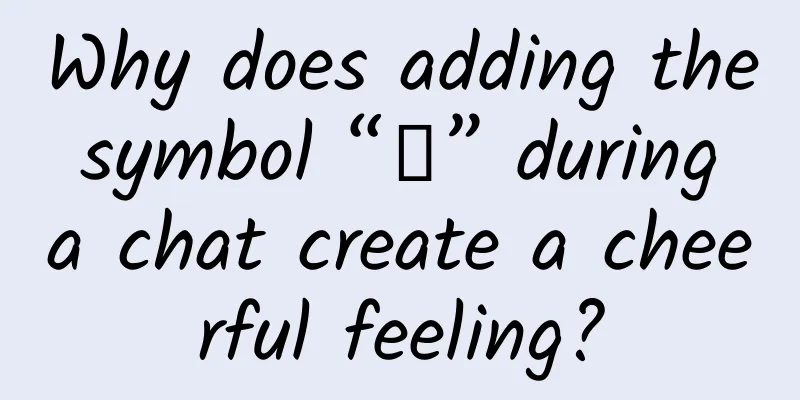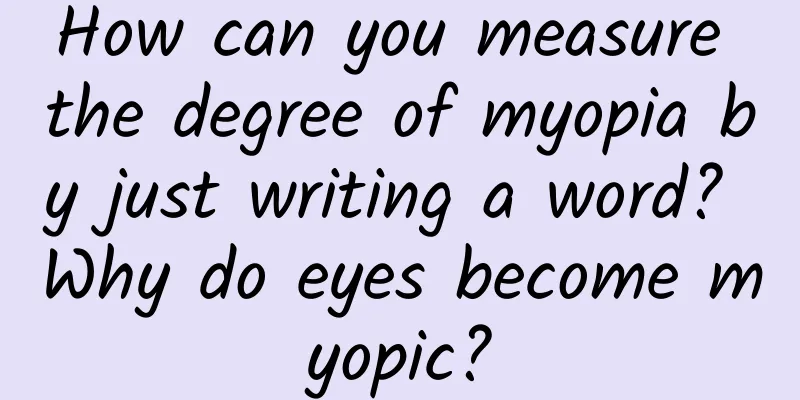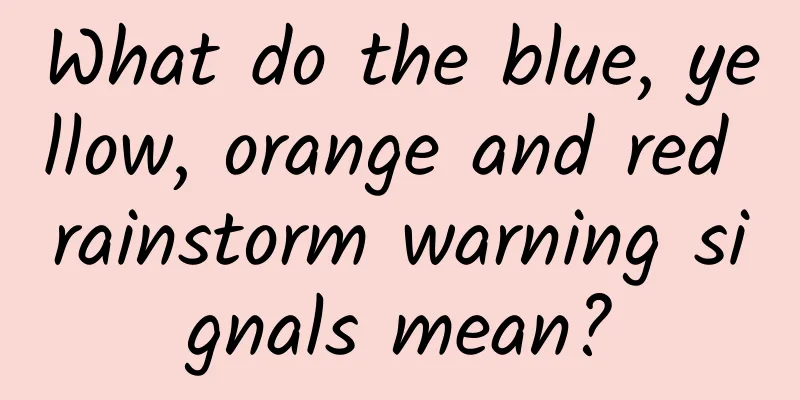Why does adding the symbol “~” during a chat create a cheerful feeling?

|
Although punctuation marks are small, their selection and use cannot be ignored. Especially in WeChat chats, you cannot see the other person’s expression. A small punctuation mark can convey a world of difference in emotions. The symbol "~" appears more and more frequently in chats. Why does adding "~" create a cheerful feeling? Let’s take a look at the respondents’ answers! Destroys the serious context The point of the tilde is to completely disrupt the serious context. Visually, curves destroy the original sense of structure of Chinese characters and break away from the seriousness of line segment construction. Curves are connected with things in nature, such as water waves, clouds, and tails, which is a free and moving experience. Our emotional system is most keen to respond to moving things. From the auditory point of view, the tilde represents a kind of transition effect, which destroys the original tone system of Chinese and breaks away from the seriousness of the four (based on Mandarin) determined tone trends. This is similar to the disharmony when a second language speaker of Chinese speaks, but the difference is that as a native speaker of Chinese, we can better handle this transition and get different emotional experiences through the change of tone. Semantically, the tilde, like the ellipsis, destroys the integrity of the sentence, which is different from the seriousness of the period and the emotional experience determined by the exclamation mark and question mark. This feeling of wanting more also indicates the uncertain rich emotions of this sentence. This turns from an acquired emotion to an emotion that requires more contextual support, which invisibly deepens the emotion. More importantly, the tilde can induce a synesthesia-like experience. That is to say, when we see the tilde, we may see her (his) graceful (enchanting) and charming (charming) figure, and hear her (his) cute (sexy) inflection. This is an unstoppable surge for our emotional system! We can find that in real life, the handwritten tilde is not as sensible as the one on digital devices (handwriting itself has an emotional experience); the tolerance for men using inflection and the acceptance of women using inflection are also much lower than in the virtual world (determined by the auditory information encoding mode); and after the emergence of emoticons, the variability and simplicity of the tilde are far better than the ellipsis with similar uses (monotony is a flaw, and Shift+6 is outrageous). When we see the tilde in a sentence, it is very likely that not only the Wernicke area and Broca's area are activated. Our FFA may also be activated (gazing at her face), BA4 and 6 may also be activated (reproducing her posture), and the hippocampus and cingulate gyrus may also be activated (surrounded by her fragrance and feeling her kindness to you). A tilde can make us put aside our arrogance, grudges, jealousy, and even hatred, and devote ourselves wholeheartedly to the beautiful emotions we have created. Is there anything simpler and happier than a tilde? Cross-modal integration in cognitive processing Answerer @ Warsaw (1k + upvotes) A premature idea that the visual signal influences the sound signal behind the text. The visual signal brought by the tilde is very similar to the tone symbol of Chinese pinyin. And its wave shape itself is also a signal of ups and downs. Therefore, adding the tilde during the chat produces a certain cross-channel integration and changes the tone of the voice itself. And the signal conveyed by the tilde happens to be a more cheerful modulation. Thus, people who see it have a more cheerful atmosphere. Cross-modal integration is a very common signal integration process in human cognitive processing. After all, we encounter a lot of information in our lives. Our eyes, ears, even noses and mouths, and the sense of touch of our skin are constantly experiencing the world. For example, when we taste delicious food, its appearance (vision), taste (smell and taste), and taste (touch and hearing) will affect our experience of food. In turn, they combine into a whole and affect our cognition. These cross-modal phenomena can occur between hearing and vision, or between vision and touch. We can even see human-like cross-modal integration in great apes. Among them, audio-visual integration is probably the most studied. Audio-visual integration involves both the impact of hearing on vision and the impact of vision on hearing. Sometimes, the signal-to-noise ratio (SNR, credibility) of different information channels will also affect the dynamic balance of audio-visual integration. What's more, different emotions lead to different audio-visual information integration. In fact, the tilde, as a visual information, can affect our perception of the tone of the sound. For example, the integration of visual and auditory signals will affect our perception of the duration of the sound. In terms of tone, the dynamics of a person's face (visual confidence) will indeed affect our perception of the tone he or she is speaking. Therefore, as a wave sign that can trigger the feeling of fluctuation, it can also modulate the tone of words in our hearts. Isn't a tone that fluctuates up and down lovely? It is naturally cheerful. Intonation information supplements the meaning of text Because when speech is converted into text, there is information loss. For example, please judge whether this sentence is a "good word": "You are such a clever little fellow." I can't judge. But if you communicate face to face, can you make a correct judgment? Right, it's pretty obvious: A. The speaker can't help laughing, and the ending tone rises, so you know that you can ask for an ice cream next. B. The speaker is extremely perfunctory and bland, so you feel bored and leave in shame. C. The speaker has a look of contempt and sarcasm on his face. You know that although your prank was successful, your image has been greatly damaged in the eyes of the other party... D. The speaker’s face is red and his neck is thick, and his words are sonorous, which scares you to the point of being at a loss. In your heart, you already know that the feather duster will be “late but arrived”… But once all of this is translated into words, nothing is left. In fact, if we can retain a little bit of intonation information, it would be difficult for us to understand it wrong. But the only punctuation mark in our system that can express emotion is an exclamation mark "!", which indicates strong emotion. "You are such a clever little fellow!" As soon as you see the exclamation mark, you know that B and C can be ruled out. But whether the other party will reward you with ice cream or let you savor the stick in the feather duster... that's hard to say. In fact, in voice signals, the difference between the two is very obvious. For example, as long as you hear the ending sound rising, you know that the other person is in a very good mood. What if there is no punctuation mark? With the development of the Internet and instant messaging tools, our written communication is becoming more and more instant, oral, and casual. Due to the lack of sufficient time to carefully consider words and add context, misunderstandings in communication are inevitable. If you are talking face to face, you can easily tell whether the other person is serious, joking, teasing, or showing off; but once you are chatting remotely through text, you will often mistakenly think that the other person is mocking you. Where there is demand, there will naturally be development. Among them, the symbol "~" rises and falls, and the tail is upturned. When added to the end of a sentence, it is easy to make people think of the rhyme of "playful", "relaxed" and "teasing", and naturally it has become a kind of conventional emotional symbol similar to an exclamation mark. From the user experience perspective Compared to typing text, or common punctuation marks such as commas and periods, typing ~ is more complicated. You need to hold down the shift key with your right hand, lift your left hand from the asdf key, and move it to the upper left corner to type. During a chat, if you are not happy and just want to deal with it perfunctorily, most people will subconsciously be too lazy to do such a complicated operation. So adding ~ when chatting really means that the user is in a good mood~~~ Some inappropriate answers Answerer @Anonymous user (300+ likes) Because~ ... Answer: @ chick Because I feel like I have a tail. Answerer @Je (300+ likes) One night my mother asked me why I was not happy today. Answerer @ Shuwen Because I feel cute~ cute~ da~ Answered by @Louis.Lou XX, can you come to the office to discuss this? XX, help me make a PPT ~ |
Recommend
After three days of not using it, the mask has turned into a bonsai. Will the seaweed mask sprout when applied on the face?
Everyone knows about seaweed masks, which are the...
The Thirty-Six Strategies of Insect Survival, which strange self-defense tactics can you recognize?
Insects are not only of many kinds, but also have...
How much does it cost to develop a marriage and love mini program in Longyan?
The main factors affecting the price of mini prog...
Why are your short videos boring and no one watches them? Because you didn't do the scripting.
Script design plays a very important part in vide...
Wuwei Investment Class "Professional Investor Training Camp"
Wuwei Investment Classroom "Professional Inv...
A collection of frequently asked questions about short video operations!
We always face many problems when making short vi...
Aipinche's sudden death: Internet entrepreneurship under the shadow of BAT
Aipinche recently announced that it would stop se...
Mobile Wi-Fi speed test: Huawei Mate 8 vs. Samsung Note 5
According to Huawei, the new flagship Mate 8 is cu...
The harvest never forgets the breeders! Today, I want to tell you their story of "chasing light"
...
China Unicom iPhone 5S Official Unlock 4G
Yesterday, China Unicom launched an APP designed ...
Practical Collection | "Luckin Coffee" New Retail Hot-selling Growth Methodology
Like the spring thunder that scares away hundreds...
A pamphlet distributed at an international chemistry conference dispelled the fog of molecular theory
People today seem to be getting more and more acc...
Be determined not to be a “lone swimmer”, please remember this knowledge!
The weather is hot in summer How to avoid drownin...
2021, no war for brand marketing
It's been a lackluster year for the brand mar...
If you don’t want the pressure cooker to explode, you must do this step right! !
There is an exploding pressure cooker in everyone...









